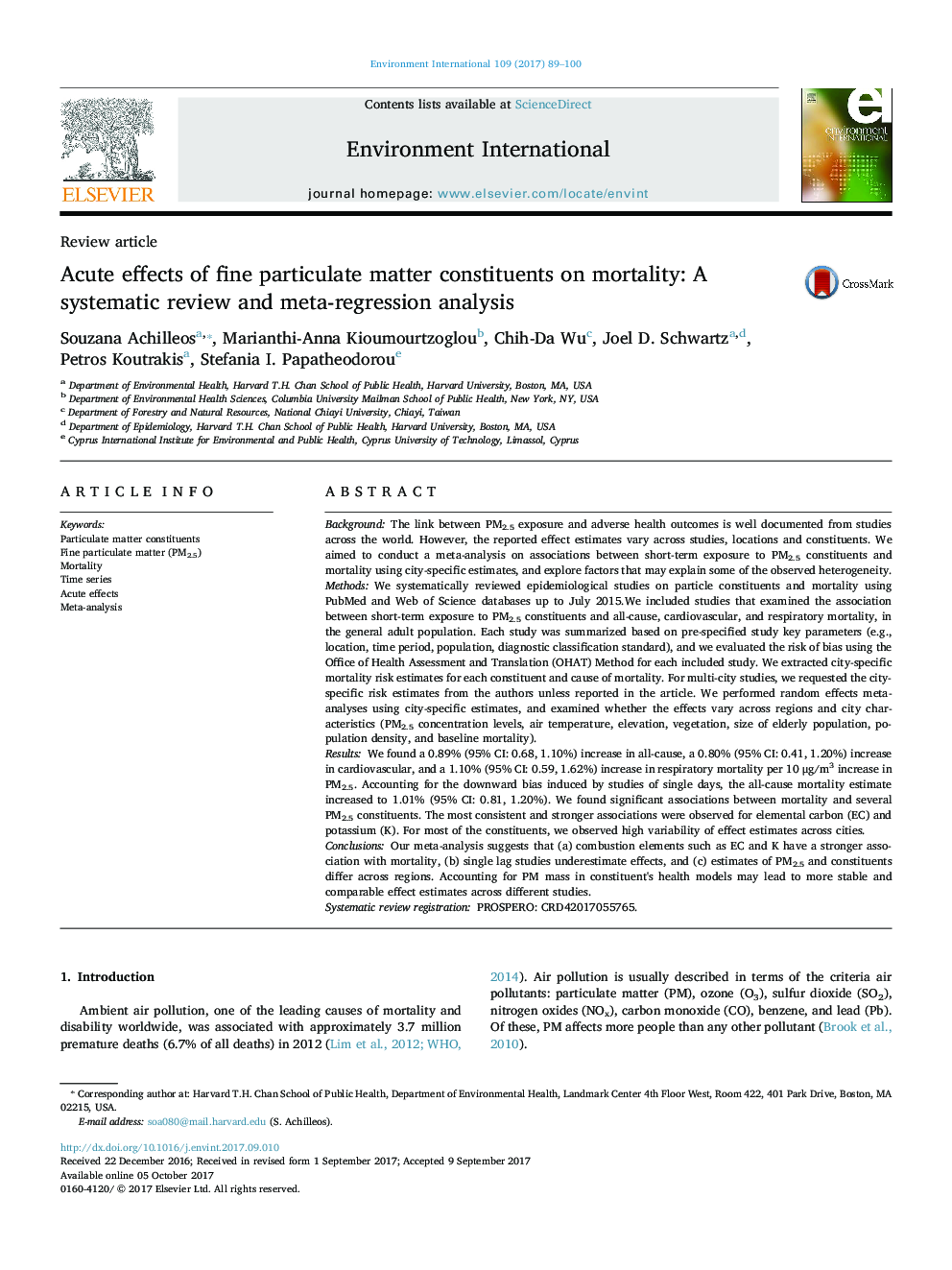| کد مقاله | کد نشریه | سال انتشار | مقاله انگلیسی | نسخه تمام متن |
|---|---|---|---|---|
| 5748175 | 1619021 | 2017 | 12 صفحه PDF | دانلود رایگان |
- A meta-analysis of acute effects of PM2.5 constituents on mortality was conducted.
- EC and K had the strongest and most consistent association with mortality.
- Single lag studies underestimate effects.
- Mortality effects of PM2.5 and constituents differ across regions.
BackgroundThe link between PM2.5 exposure and adverse health outcomes is well documented from studies across the world. However, the reported effect estimates vary across studies, locations and constituents. We aimed to conduct a meta-analysis on associations between short-term exposure to PM2.5 constituents and mortality using city-specific estimates, and explore factors that may explain some of the observed heterogeneity.MethodsWe systematically reviewed epidemiological studies on particle constituents and mortality using PubMed and Web of Science databases up to July 2015.We included studies that examined the association between short-term exposure to PM2.5 constituents and all-cause, cardiovascular, and respiratory mortality, in the general adult population. Each study was summarized based on pre-specified study key parameters (e.g., location, time period, population, diagnostic classification standard), and we evaluated the risk of bias using the Office of Health Assessment and Translation (OHAT) Method for each included study. We extracted city-specific mortality risk estimates for each constituent and cause of mortality. For multi-city studies, we requested the city-specific risk estimates from the authors unless reported in the article. We performed random effects meta-analyses using city-specific estimates, and examined whether the effects vary across regions and city characteristics (PM2.5 concentration levels, air temperature, elevation, vegetation, size of elderly population, population density, and baseline mortality).ResultsWe found a 0.89% (95% CI: 0.68, 1.10%) increase in all-cause, a 0.80% (95% CI: 0.41, 1.20%) increase in cardiovascular, and a 1.10% (95% CI: 0.59, 1.62%) increase in respiratory mortality per 10 μg/m3 increase in PM2.5. Accounting for the downward bias induced by studies of single days, the all-cause mortality estimate increased to 1.01% (95% CI: 0.81, 1.20%). We found significant associations between mortality and several PM2.5 constituents. The most consistent and stronger associations were observed for elemental carbon (EC) and potassium (K). For most of the constituents, we observed high variability of effect estimates across cities.ConclusionsOur meta-analysis suggests that (a) combustion elements such as EC and K have a stronger association with mortality, (b) single lag studies underestimate effects, and (c) estimates of PM2.5 and constituents differ across regions. Accounting for PM mass in constituent's health models may lead to more stable and comparable effect estimates across different studies.Systematic review registrationPROSPERO: CRD42017055765.
Journal: Environment International - Volume 109, December 2017, Pages 89-100
